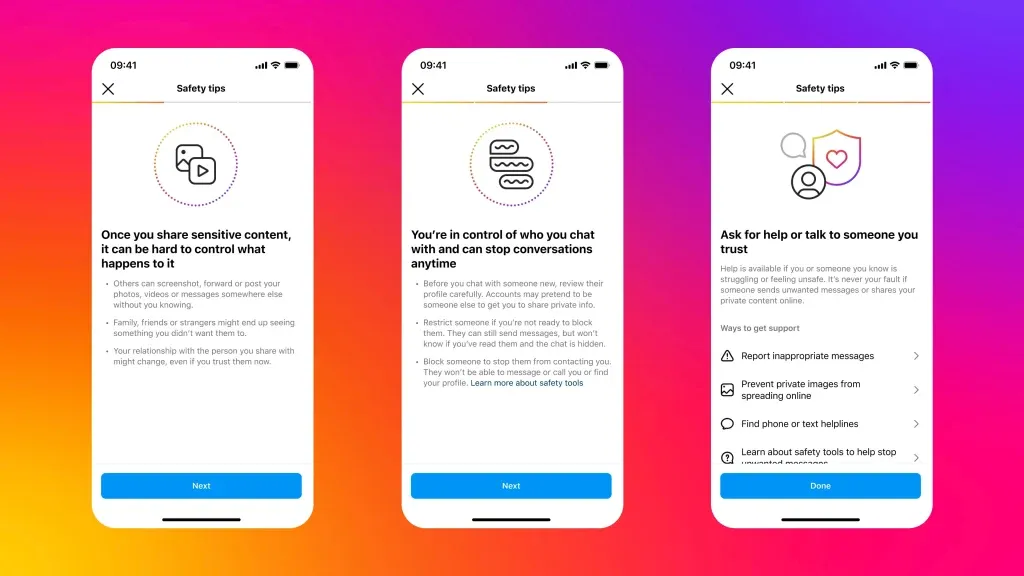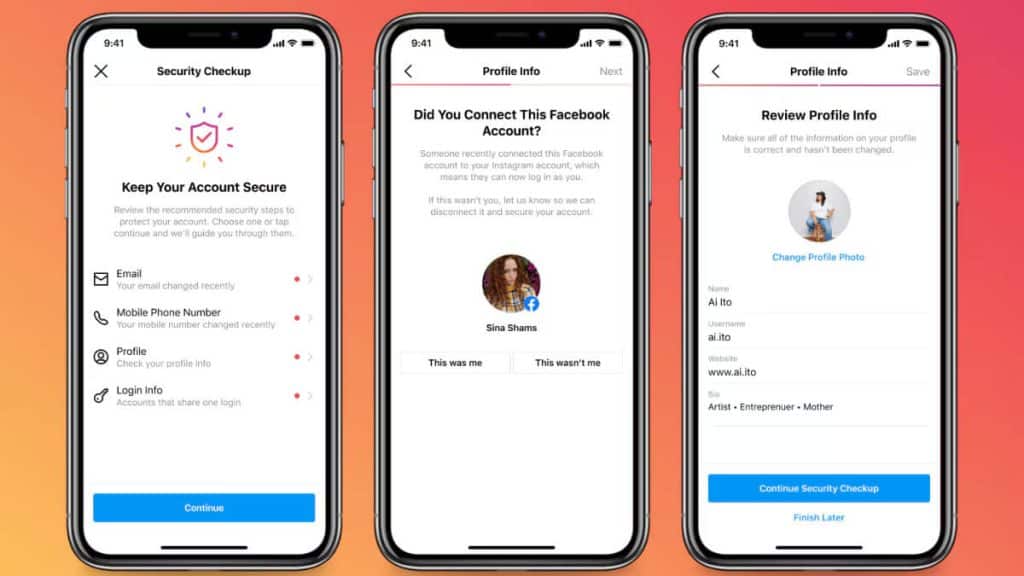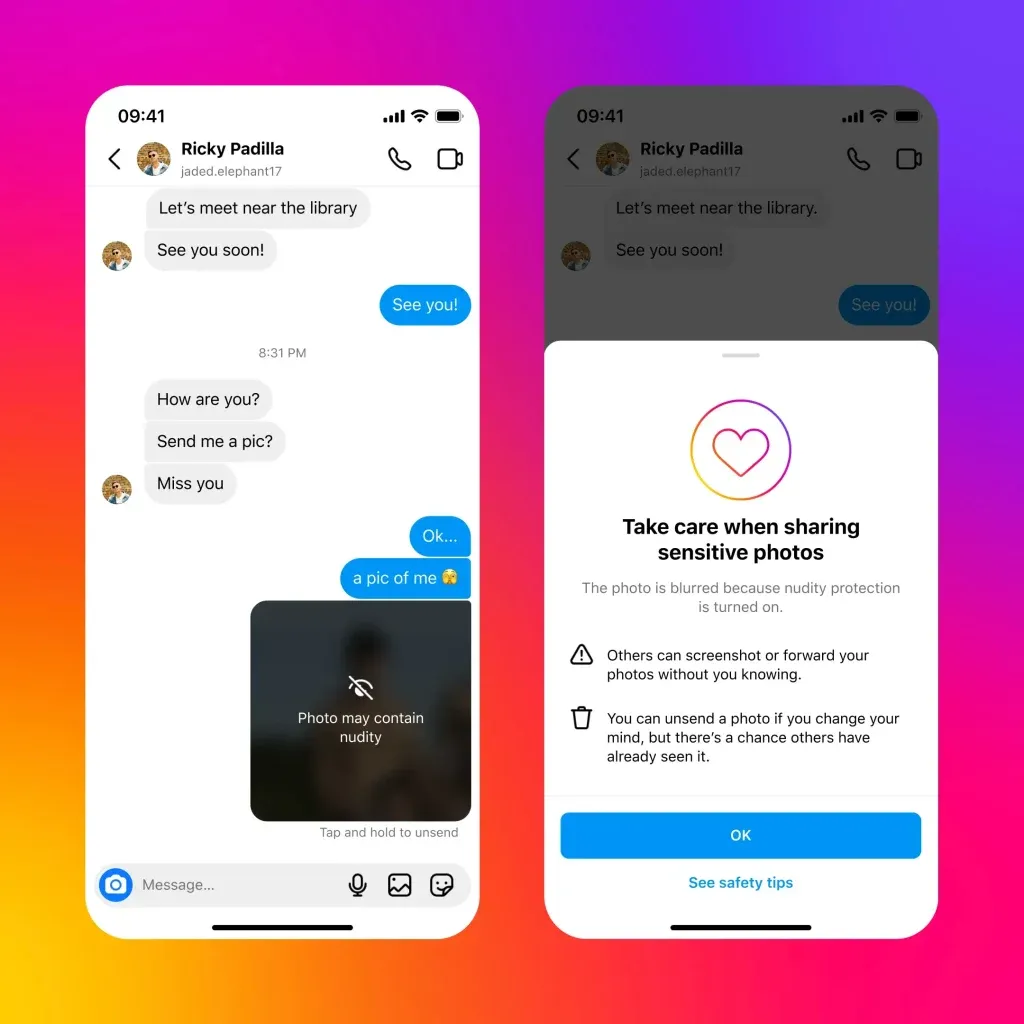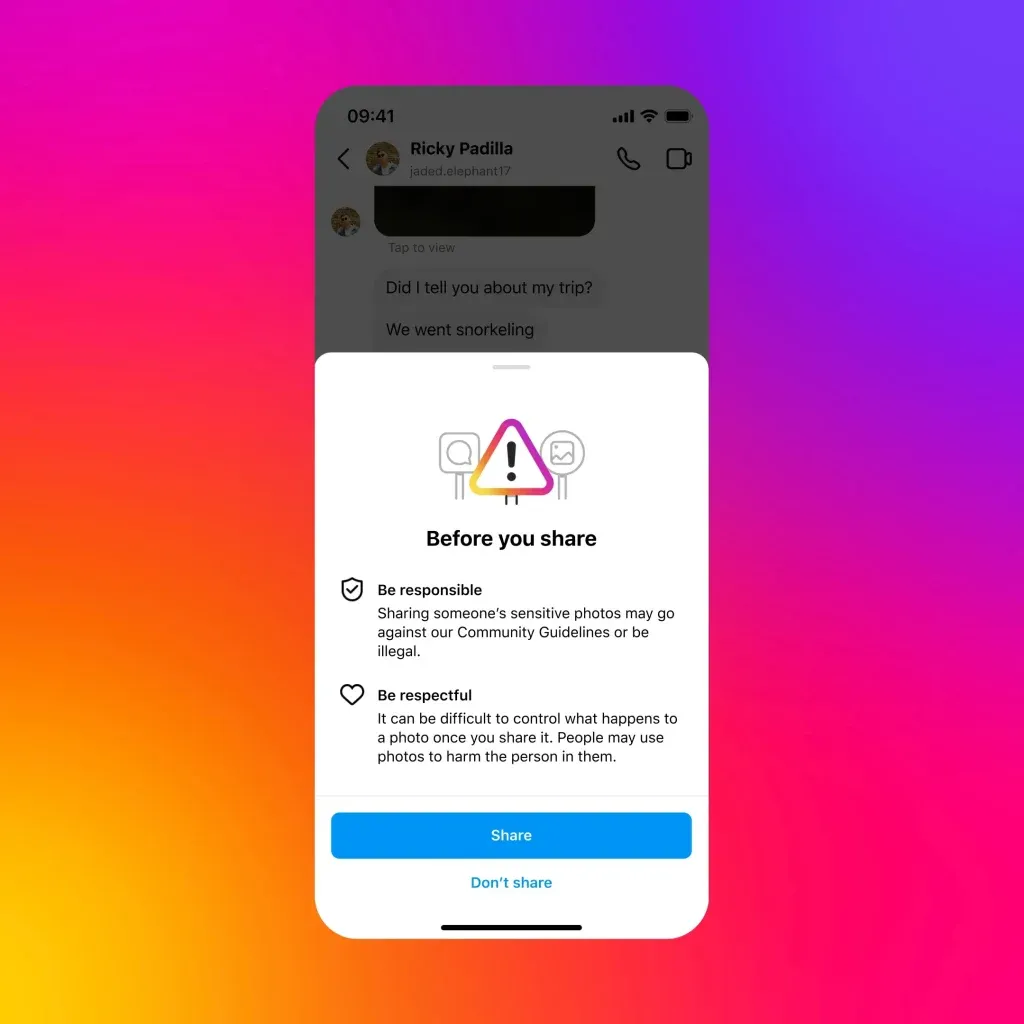Sextortion is a devastating crime that impacts individuals of all ages, especially young people. As the digital world changes, scammers also change their tactics to manipulate and exploit their victims. Understanding these tactics is essential in learning how to stop sextortion and protect ourselves and our loved ones.
Recently, Instagram has introduced innovative measures aimed at safeguarding youth from such exploitation. One notable feature is Nudity Protection, which automatically obscures nudity in private messages. This tool helps prevent scammers from finding their targets. It also teaches young users how to recognize and protect themselves from sextortion.
Along with Nudity Protection, Instagram has set stricter messaging rules for teens. Now, they can only chat with people they know. The platform also sends Safety Notices to warn young users about possible scam accounts. Additionally, Instagram works with groups like the National Center for Missing and Exploited Children (NCMEC) to support initiatives like Take It Down, which helps individuals regain control of their intimate images.
This article will explain these new features, including Nudity Protection, and provide practical steps to combat sextortion. By raising awareness and using these tools, everyone can help create a safer online space
What exactly is Nudity Protection?
Nudity Protection is a new Instagram feature that helps keep users safe from unwanted explicit content in direct messages (DMs). It automatically blurs any images with nudity, encouraging users to think carefully before sharing sensitive photos. This feature aims to prevent users from seeing unwanted nudity and to lower the chances of falling for scams on Instagram
For teens under 18, Nudity Protection is turned on by default. This ensures a safer environment for younger users. Adults will receive prompts encouraging them to activate the feature as well. When someone tries to send a nude image, they’ll see a message reminding them to be cautious. They also have the option to unsend the photo if they change their mind.
When users receive a blurred image, they won’t confront explicit content directly. Instead, they’ll have the choice to view it, block the sender, or report the chat. This thoughtful approach helps users feel empowered. This is especially important in situations where a scammer is threatening to post pictures of them or engaging in other forms of sextortion.
Additionally, the Nudity Protection feature provides safety tips developed with expert guidance. These tips remind users of potential risks. For instance, images can be easily screenshot or forwarded without their knowledge. Resources like the Instagram help center are linked for support. These resources help users understand what to do about sextortion and how to effectively deal with these situations.

How to Protect Teams from Potential Scammers?
Instagram takes serious action against users engaging in sextortion. When accounts are identified for this behavior, they are promptly removed. The platform also works to prevent these individuals from creating new accounts. In cases where it is appropriate, Instagram reports these offenders to the National Center for Missing and Exploited Children (NCMEC) and law enforcement. The teams at Instagram actively investigate and disrupt networks of scammers, disabling accounts and reporting multiple networks in the past year alone.
To enhance safety, Instagram is developing technology aimed at identifying accounts that may be involved in sextortion scams. This system analyzes various signals that could indicate suspicious behavior. These signals don’t always show that an account has broken any rules, but they help take precautions to stop potential scammers from reaching teen users. This builds on existing efforts to shield young users from other potentially harmful accounts.
One of the key measures Instagram has implemented is making it more difficult for potential sextortion accounts to message users. Any message requests from these accounts now go directly to the recipient’s hidden requests folder. This means users won’t receive notifications about these messages and can avoid seeing them altogether. For those who may already be in conversations with potential scammers, Instagram displays Safety Notices. These notices encourage users to report any threats related to sharing private images and remind them that they can refuse any uncomfortable requests.
For teenagers, Instagram is going even further. The platform prevents adults from starting direct message chats with teens they aren’t connected to. Recently, stricter messaging defaults were introduced for users under 16 (and under 18 in some countries), ensuring they can only receive messages from people they already know. Additionally, the “Message” button is hidden from potential sextortion accounts on teen profiles, even if they are connected. Instagram is also testing methods to hide teen accounts from these scammers in follower lists and search results.
What Support Is Available for Users Facing Scams?
Instagram is currently testing new pop-up messages for users who may have interacted with accounts removed for sextortion. These messages will guide users to valuable resources. This includes the Stop Sextortion Hub, support helplines, and options to reach out to a friend. Users over 18 will be directed to StopNCII.org. Those under 18 can access Take It Down.
To enhance child safety, Instagram is adding new child safety helplines from around the world to its in-app reporting features. When teens report issues, such as nudity or threats to share private images, they will be connected to local child safety helplines. This aims to provide critical support and resources for users facing potential risks online.
What is Sextortion?
Sextortion represents a form of online exploitation where individuals threaten to share intimate images or information unless victims comply with demands for money or further explicit content. Unlike traditional extortion, which might involve physical harm or property loss, sextortion manipulates victims through their private images or communications. This crime can impact anyone, but young people and those who share intimate content online are often more vulnerable.
How does Sextortion Work?
Sextortionists employ various tactics that typically follow a similar pattern:
- Grooming Phase: Scammers start by building a relationship with their target. They often use social media platforms like Instagram to initiate contact, posing as someone trustworthy. Compliments, flattery, or feigned interest help establish a connection.
- Sharing Intimate Content: Once trust develops, the scammer may coax the victim into sharing explicit images or videos. This could happen under the pretense of mutual sharing or as part of a romantic relationship.
- Threatening Behavior: After receiving the intimate content, the scammer threatens to expose the victim’s images to friends, family, or the public unless demands are met. This might include requests for money, more explicit images, or personal information.
- Exploitation and Coercion: Victims often feel trapped, leading to compliance out of fear. The emotional toll can be devastating, resulting in anxiety, depression, and a sense of helplessness.
Why Understanding Sextortion Is Crucial?
Recognizing sextortion is vital for learning how to stop sextortion effectively. Awareness of its tactics empowers individuals to spot red flags and take preventive measures. For example, knowing the signs of grooming helps users disengage from potentially harmful interactions early.
If someone feels threatened, it’s essential to know sextortion what to do. Keeping evidence of communications, such as screenshots, and reporting the incident to platforms like Instagram or contacting the Instagram helpline can significantly mitigate the situation.
As sextortion remains a prevalent issue on social media, being informed about how to deal with sextortion and the resources available aids in protecting oneself and others from online abuse. By fostering a culture of awareness and support, individuals can combat scams on Instagram and create safer online spaces.
If you or someone you know faces a scammer threatening to post pictures of me, it’s vital to seek help immediately. Support services and hotlines are available to assist victims in navigating these troubling circumstances. Together, by staying informed and vigilant, individuals can work to stop sextortion and ensure a safer digital experience for everyone.
How to Secure Your Instagram Account
Securing your Instagram account is an essential first step to stop sextortion. As more users engage with the platform, it’s crucial to adopt robust security measures to protect personal information and reduce the risk of becoming a target for scams on Instagram. Here are several practical tips to enhance your account’s security:

1. Enable Two-Factor Authentication (2FA)
Two-factor authentication adds an extra layer of security to your account. With 2FA enabled, you’ll need to provide a second form of identification—typically a code sent to your phone or an authenticator app—each time you log in. This makes it significantly harder for scammers to access your account, even if they somehow obtain your password.
To enable 2FA on Instagram, navigate to Settings > Security > Two-Factor Authentication and follow the prompts to set it up. This simple step can drastically lower your chances of falling victim to online threats.
2. Use Strong, Unique Passwords
Creating a strong password is vital for account security. Avoid using easily guessable information like birthdays or common phrases. Instead, choose a mix of letters, numbers, and special characters. It’s also wise to use a unique password for your Instagram account that you don’t use for any other services.
Friendly reminder: If you’re currently using a weak password with similar characters, it’s time to change your Instagram password!
Consider using a password manager to generate and store complex passwords securely. This way, you won’t have to remember every password while keeping your accounts safe.
3. Regularly Review Your Followers and Account Activity
Take the time to regularly review your followers and account activity. Remove any accounts that seem suspicious or that you do not recognize. Look for accounts with incomplete profiles, no profile picture, or a history of spammy content, as these can be signs of potential scams.
Also, regularly check your account activity log to spot any strange login attempts or changes to your account. If you notice something suspicious, take immediate action by changing your password and enabling 2FA if you haven’t already.
4. Adjust Privacy Settings
Instagram offers a variety of privacy settings that can help protect your account. You can set your account to private, which means only approved followers can see your posts and stories. This can reduce the risk of unwanted interactions and gives you greater control over who can view your content.
To adjust your privacy settings, go to Settings > Privacy and select the options that work best for you. For younger users, activating stricter settings can help minimize contact with potential sextortionists.
5. Be Cautious with Direct Messages
Direct messages (DMs) can often be a gateway for scammers. Be careful when you get messages from unknown accounts, especially if they seem too friendly or are asking for personal information or images.
If you receive a message from a user who seems suspicious or if a scammer threatening to post pictures of you reaches out, do not engage. Instead, block and report the account to Instagram. This not only protects you but helps keep the community safer as well.
6. Utilize the Instagram Helpline and Resources
In the event of encountering harassment or sextortion attempts, knowing how to stop sextortion is crucial. The Instagram helpline is available to provide guidance and support. They can assist with reporting accounts and understanding the next steps if you feel threatened or unsafe.
If you find yourself in a situation where you’re unsure of sextortion what to do, reach out for help. Getting to know resources and support networks can be very helpful in understanding online safety.
Final thoughts
Navigating the digital world can feel overwhelming, especially with threats like sextortion and intimate image abuse out there. It’s crucial to protect yourself and those you care about, particularly on platforms like Instagram. Thankfully, Instagram has introduced helpful tools like Nudity Protection and stricter messaging rules for teens, which aim to create a safer online experience.
These features can make a real difference in avoiding unwanted explicit content and keeping potential scammers at bay. Being aware of the tactics used by these scammers is essential, and it’s important to know how to stop sextortion when you encounter it. If something feels off, don’t hesitate to report it. And remember, the Instagram helpline and other support services are available if you find yourself in a tough spot.
You’re not alone in this. By sharing information and having open conversations about online safety, we can build a supportive community. Learning how to stop sextortion is vital, and knowing what steps to take if you feel threatened can empower you and others. Together, we can help each other navigate this digital space more safely.




